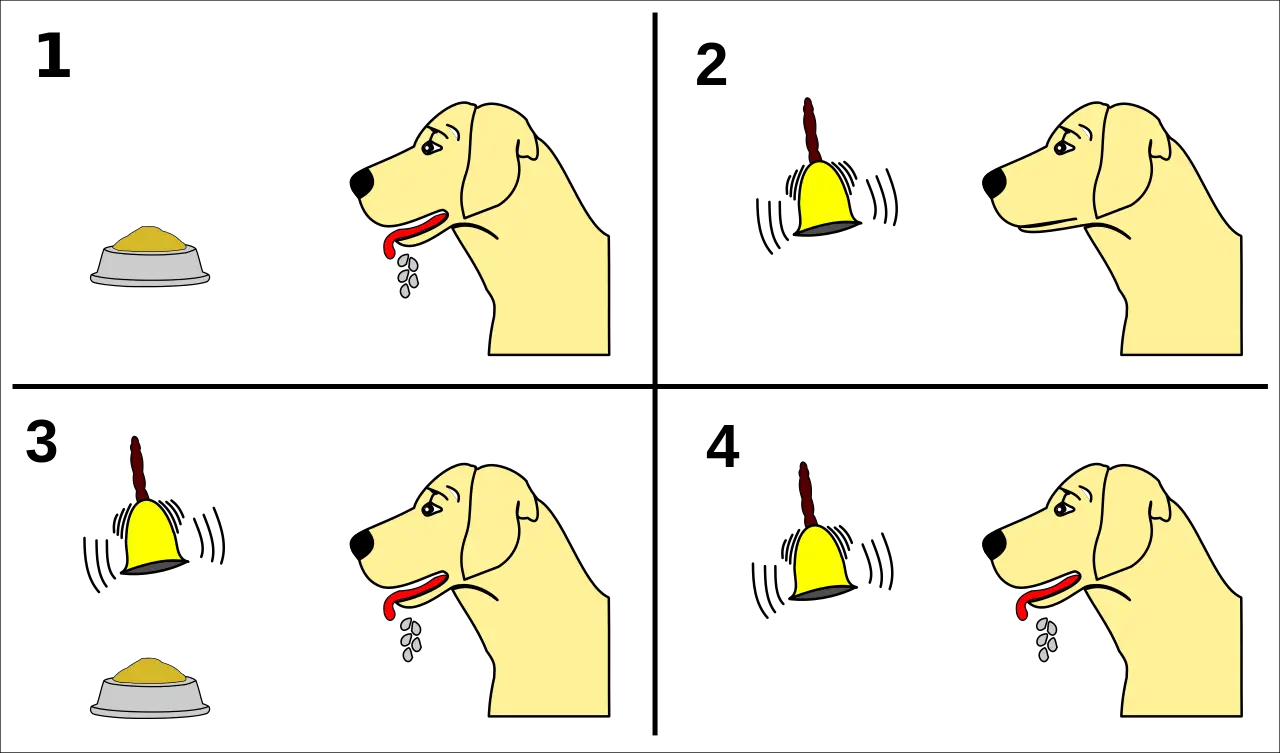In the early 1900s Pavlov achieved something more than getting a dog to drool at the sound of a tune. His famous experiment made people aware of and explained a type of learning that is instinctual to intelligent life. “Learning by association” or specifically “classical conditioning” is a way that we associate an unrelated (neutral) stimulus to another stimulus which in result induces a specific behavior.
There are generally 4 components to classical conditioning. The unconditioned response (UR), unconditioned stimulus (US), conditioned response (CR), and the conditioned stimulus (CS). In Pavlov’s example, the US was the food and the UR was salivating. This is the natural reaction the dog would have. During conditioning, the tune was played before the food was given to the dog. After some time the tune became the CS and the salivating became the CR.
A real life example of a way I have been classically conditioned happens to me almost every night. I find myself rummaging through my cabinet looking for something sweet. I’m craving dessert. Most of the time I don’t realize I want dessert until after I have sought it out by opening up my cabinet. Now, I don’t have to eat dinner and I will still crave something sweet in the evenings. As a kid my parents would often have dessert for us after dinner and when I had a meal plan I would almost always get a cookie or ice cream at the dining call. Now that I shop and cook for myself I don’t always have a sweet treat to fulfill my craving.
This is one of the reasons why weight loss can be so hard for people. People have habits that are hard to break. When you eat dinner, it triggers a response that once you are done it is time for dessert. Fortunately for people trying to lose weight, these habits can be broken with some discipline and time. If you stop eating dessert after dinner the cravings for it can go away. This is an example of “extinction”. However, if you start eating desserts again these cravings can come back and this is known as “spontaneous recovery”.
Classical conditioning happens all around us without us noticing. It is important to be aware of how we might be classically conditioned to avoid immediate responses we might not wish to have. What are some ways you have experienced classical conditioning first hand?
